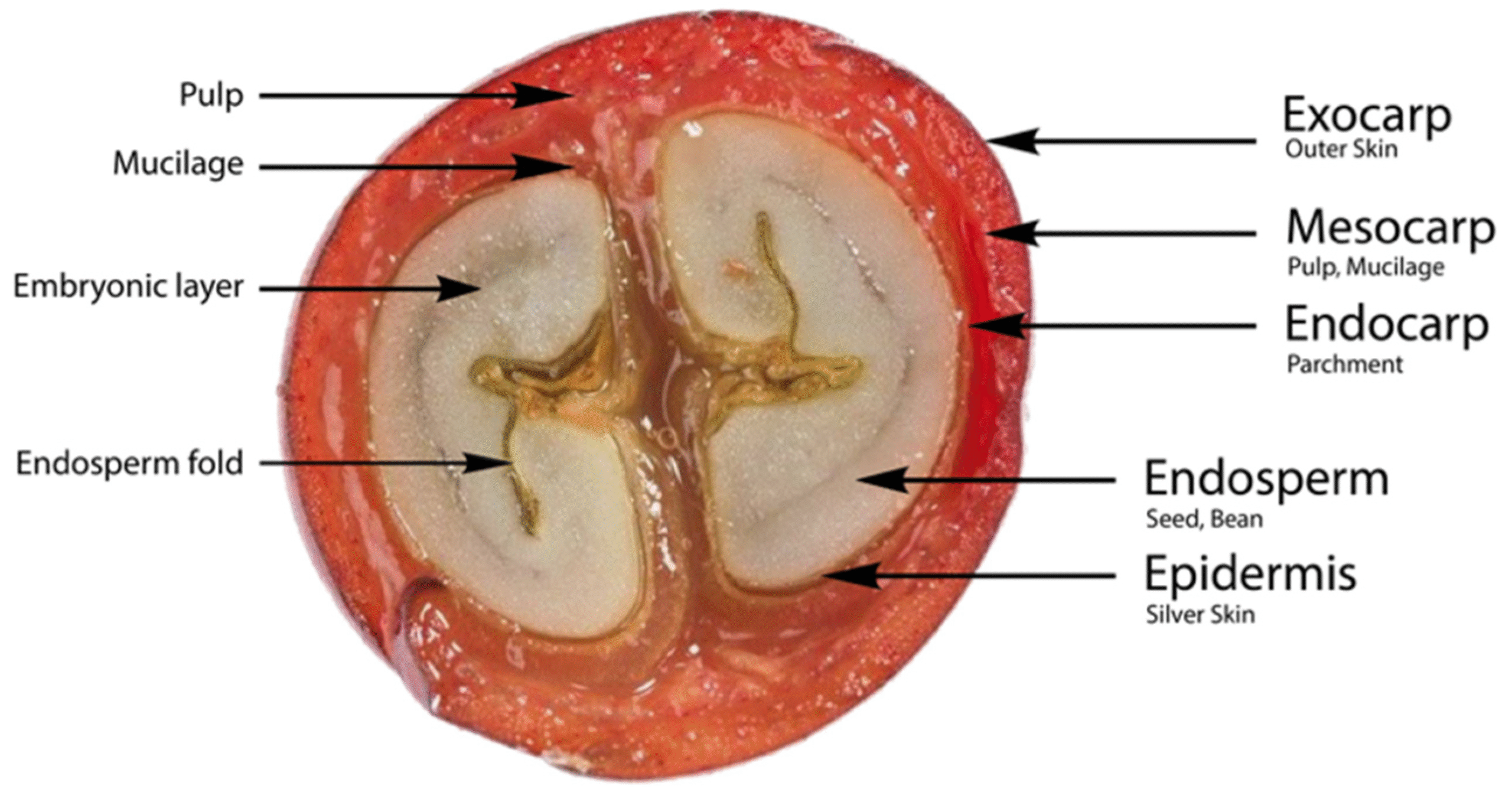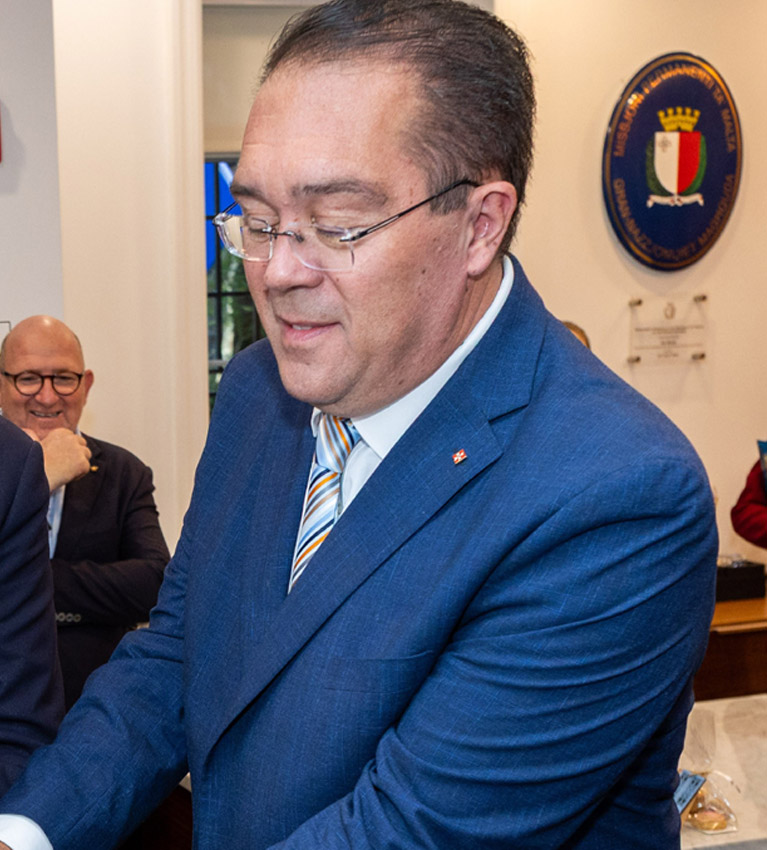
Anatomy of a Coffee Bean

Steering Malta’s Tourism
June 21, 2025
Horeca Wine Reviews
June 22, 2025Deandra Gauci delves into the different layers of the coffee bean and how each of these impact flavour development.
In previous editions we have explored and gained a better understanding of the different coffee species and what impacts their growth. Now, it’s time to delve deeper into fruit anatomy.
This aspect is crucial to our understanding of coffee quality, as each of the layers that make up a bean impact the overall taste and quality of the brew. Processing methods (washed, natural, honey) will determine how much of the fruit remains on the bean during drying, consequently influencing flavour development.
What is a coffee bean?
Let’s take a look at each specific layer of the bean, explaining what each does.
Exocarp (skin or peel)
The outermost tissue of the fruit. This often glossy outer layer changes colour from green to yellow, red, or even purple when ripe.
Mesocarp (pulp)
The fleshy part situated beneath the exocarp and endocarp, softens with maturation, rich in sugars. Plays a role in fermentation and flavour development.
Mucilage
A sugary and sticky layer surrounding the coffee seeds. It contributes to the sweetness and complexity of the final coffee flavour.
Endocarp (parchment)
A papery protective layer encasing the beans. It hardens as the fruit matures and is removed during the milling process.

Perisperm (silverskin)
Also known as chaff when coffee is roasted. A very thin, almost translucent layer that clings to the coffee bean even after the parchment is removed. Some of it remains as chaff during roasting.
Endosperm (the actual seed)
The actual seed of the coffee plant. It determines the taste profile and aroma that will eventually influence the flavour quality.
Embryo
This tiny part of the seed contains few storage reserves and is dependent on the endosperm for nutrients during growth. Responsible for germination, it enables the coffee plant to grow if/ when planted.
Seed development
Normally, two coffee seeds per fruit are formed, but this is not always the case. Sometimes there is only one bean per fruit (monospermy). This can occur due to several factors, including improper pollination or incomplete endosperm development.
The remaining seed occupies more of the fruit space and develops a more rounded shape. These beans are called peaberries. The endosperm of one of the two beans in the fruit can sometimes fail to develop inside a developed endocarp while the other bean matures into a normal-shaped bean. In this case, the undeveloped bean is called an empty bean.
Polyspermy occurs when the ovary has three or more cavities, resulting in numerous seeds per fruit. The most common of these are three seeds per fruit, with the seeds taking on a triangular shape.
Also known as chaff when coffee is roasted. A very thin, almost translucent layer that clings to the coffee bean even after the parchment is removed. Some of it remains as chaff during roasting.
Endosperm (the actual seed)
The actual seed of the coffee plant. It determines the taste profile and aroma that will eventually influence the flavour quality.
Embryo
This tiny part of the seed contains few storage reserves and is dependent on the endosperm for nutrients during growth. Responsible for germination, it enables the coffee plant to grow if/ when planted.
Seed development
Normally, two coffee seeds per fruit are formed, but this is not always the case. Sometimes there is only one bean per fruit (monospermy). This can occur due to several factors, including improper pollination or incomplete endosperm development.
The remaining seed occupies more of the fruit space and develops a more rounded shape. These beans are called peaberries. The endosperm of one of the two beans in the fruit can sometimes fail to develop inside a developed endocarp while the other bean matures into a normal-shaped bean. In this case, the undeveloped bean is called an empty bean.
Polyspermy occurs when the ovary has three or more cavities, resulting in numerous seeds per fruit. The most common of these are three seeds per fruit, with the seeds taking on a triangular shape.

Deandra Gauci
Deandra is Malta's only accredited licensed coffee educators, both with CQI and SCA.
Click here to see Horeca Issue 19 online



